CES Sponsor
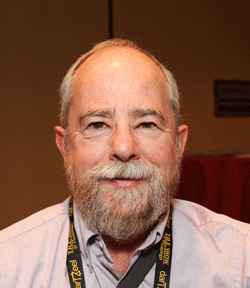 Just as winter is the pause before spring’s rebirth, I found taking one year off from attending CES was refreshing. As I walked the halls and visited the rooms in 2012, I could see and feel some changes along with the same old same old. With nearly 250 rooms between CES and T.H.E. Show there is a surprising amount of repetition year to year.
Just as winter is the pause before spring’s rebirth, I found taking one year off from attending CES was refreshing. As I walked the halls and visited the rooms in 2012, I could see and feel some changes along with the same old same old. With nearly 250 rooms between CES and T.H.E. Show there is a surprising amount of repetition year to year.
Some exhibitors thought attendance was up but I could still walk the halls with relative ease compared to the heyday of the high-end audio portion of CES several years ago. What I noticed was a much more hopeful and actually cheery mood. The dark winter of audio (and the economy) is ending and spring is anticipated. Exhibitors were upbeat and it seemed like there were a lot of new companies testing the waters. At least they were new to CES and me.
I noticed two trends. While many exhibitors used laptop-based music servers, the savvy ones also offered the opportunity for guests to hear equipment with familiar tracks from CDs or vinyl they had brought with them. I noticed with some amusement that a large portion of exhibitors using computer based servers struggled with accessing the music they wanted. Frequently the person who set up the computer audio was not the person operating it. Long live the shiny silver disk.
While there was the usual percentage of ultra-expensive equipment I also observed that it is a wonderful time to be an audiophile on a budget. I saw numerous examples of great sounding equipment at unbelievably low prices. Perhaps it is a result of the economy forcing manufacturers to rethink their product lines and philosophy.
As per my custom, I won’t try to report on every room I visited. My report this year will be a combination of what I thought were the best sounding rooms and those that offered much more than acceptable performance at affordable prices. The best sounding rooms were over-the-top expensive but they provided a reference as to what is possible. They did not sound like all of the other rooms and that is probably the point. They stood above the fray as a challenge to other manufacturers. A gauntlet cast. As for the other rooms in my report, although more modest in price and performance, they are examples of why it is indeed a wonderful time to be an audiophile on a budget.
Magnepan, Inc. (T.H.E. Show Conference Room A)
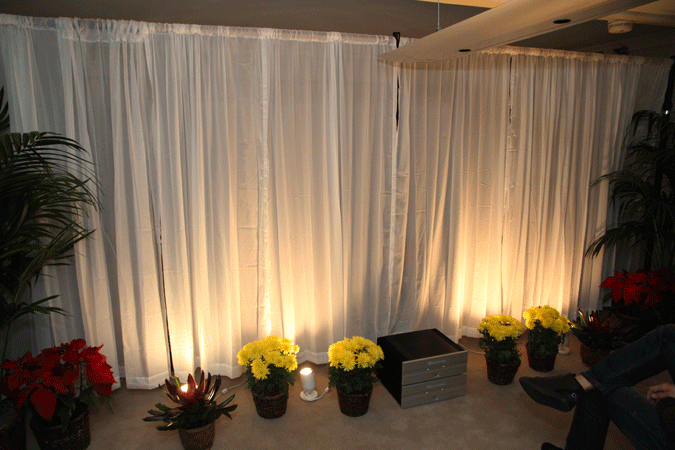
Legendary not just for providing great sound for the money but great sound period, Magnepan probably enjoys a dealer network that is the envy of many manufacturers. Nevertheless, they have felt their own and their dealers’ and customers’ pain caused by the rapid disappearance of brick and mortar retailers. Magnepan has resisted direct sales because they feel that the best way to guarantee customer satisfaction is through maintaining a network of dealer support. Now they have introduced a bold new program to bring their speakers to a show room near you. And that would be your very own home.
The program is called Maggie Dealer-Direct. Magnepan is beginning cautiously so the program currently only encompasses two models–the Mini Maggies and the motorized MMC 2 wall-mount speakers. Customers are able to try those models in their own home for 30-days with full return privileges. If they decide to return the speakers they would responsible for return shipping costs.
Orders would be placed through the nearest dealer. The dealer would handle the financial end of the transaction and provide customer support. The Magnepan factory would provide service by drop-shipping speakers to the customer and receiving returns for refurbishing. Magnepan representatives indicated that if the program were successful it would be expanded to other Magnepan models. They also expressed the hope that others in the industry would adopt similar programs.
At T.H.E. Show, MMGs ($599/pair) were exhibited along with the Tri-Center and Bryston electronics. The Tri-Center consists of a CCR center-channel speaker ($2,995) and two MMC 2 wall-mounted speakers ($1,995/pair). Since my sleeping room was just down the hall in the Flamingo I was the first visitor to the Magnepan room on the first day. I was able to have the room to myself for enough time to run through a larger than normal number of my test tracks. I was amazed at the uniformly excellent rendition by the MMGs and Tri-Center. I wondered what the MMGs would sound like without the center speakers. On the other hand I have to acknowledge the MMGs were placed farther apart than I would expect to find them in most homes thus negating some of the need for center speakers. But demonstrating the odd pairing was not the object of the Magnepan room. The purpose was to deliver the message that, under the Maggie Dealer Direct program, consumers could hear those speakers in their own listening room with their personal equipment. Regardless, the MMGs represent one of the biggest bargains in the audio industry. They provide a heck of a lot of great music for very few dollars.
CES Sponsor
Wharfdale/Napa Acoustic (Venetian Suite 29-226)
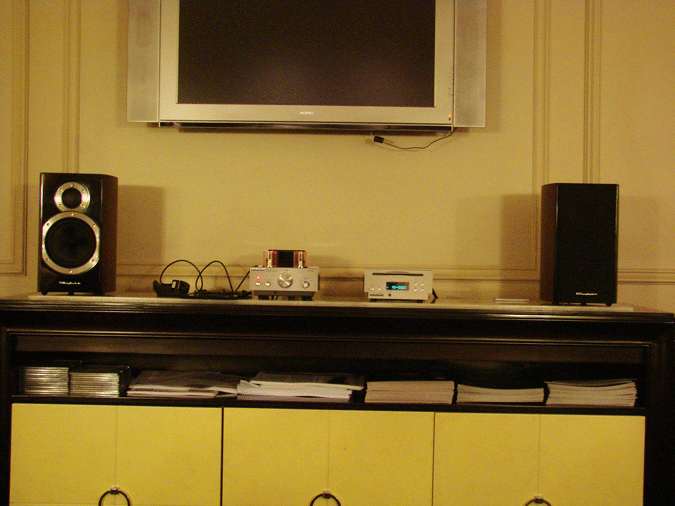
Wharfdale and Napa Acoustic presented a great sounding compact system for less than I typically pay for a power cord. The Wharfdale 10.1 speakers ($349) were paired with a Napa Acoustics NA-208CD player ($399) and NA-208A hybrid integrated amplifier ($399). The CD player features optical, analog, and headphone outputs with a remote that controls the output level of each.
The 25Wpc integrated amplifier is a tube/solid-state design with two 6N1 tubes. It features three inputs including one for an iPod that also functions as a charger. The package includes cables for both an iPod and an iPhone and a cradle to hold one. The amplifier and CD player each measure 7”(W) x 5”(H) x 9.5”(D). The Wharfdale speakers measure 7.6”(W) x 11.7”(H) x 11” (D).
PSB Speakers (Venetian Suite 29-330)
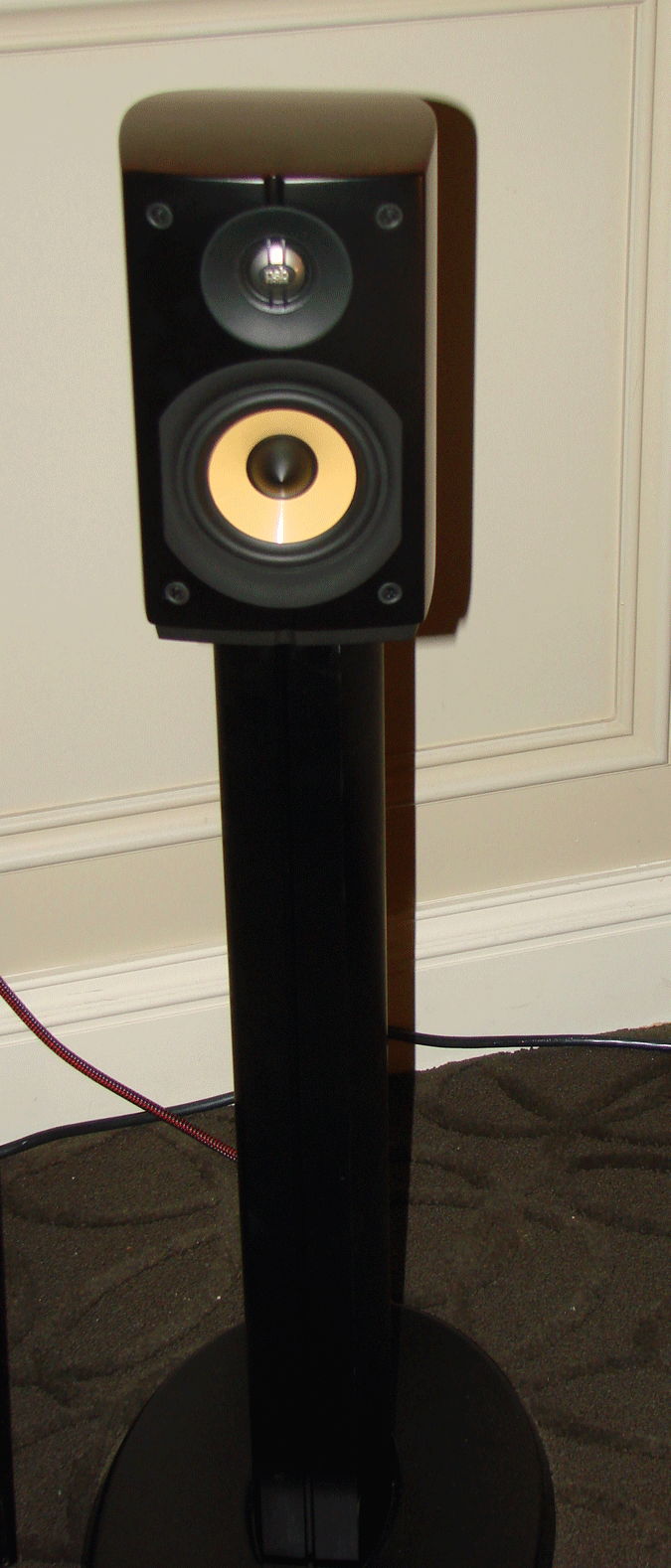
The mouse that roared–I stood there amazed and amused. The PSB Imagine Mini loudspeakers ($760-830/pair depending on finish) kick butt and, with five finishes to choose from, look fantastic while doing it. At only 5.75”(W) x 9.25”(H) x 8.3(D) they are easy to place and PSB has made that even easier by introducing a dedicated stand ($300) and wall-brackets ($100). The cleverly designed wall-brackets adjust for tilt and toe. The stand accommodates hidden wiring. This compact package would be a great choice for a second system, surrounds, or a primary system on a budget.
I became so excited by the surprising performance of the Minis even when played loud I forgot to take note of the ancillary equipment and had to inquire about it later. My bad, but testimony to the performance of the Minis. They made me forget about equipment. Amplification was an NAD C 356BEE integrated amplifier with the Modular Design Construction (MDC) USB-DAC.
Silverline Audio Technology (Venetian Suite 29-308)
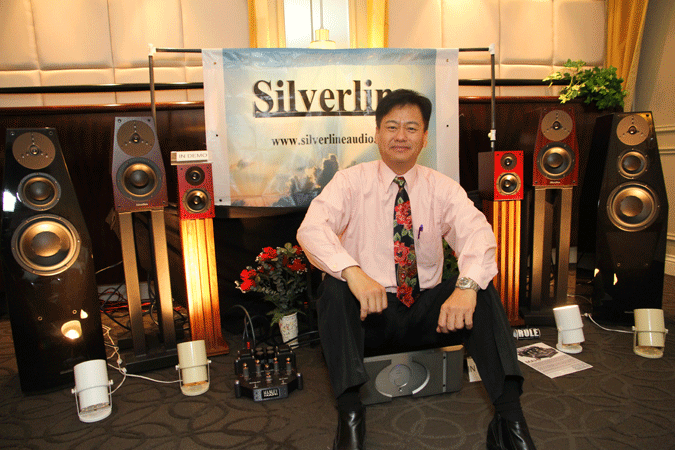
At CES Alan Yun introduced a replacement to the well-received Minuet Supreme. The new Minuet Supreme Plus ($699) promises improved bass response and a slight increase in sensitivity. I heard the Minuet Supreme Plus with the 20 Wpc Manley Laboratories Mahi ($4600/pair) operating in the 20 Wpc triode mode. Alan Yun continues his history of offering excellent performance in easy to drive, affordable speakers.
CES Sponsor
Fritz Speakers (T.H.E. Show 4035)
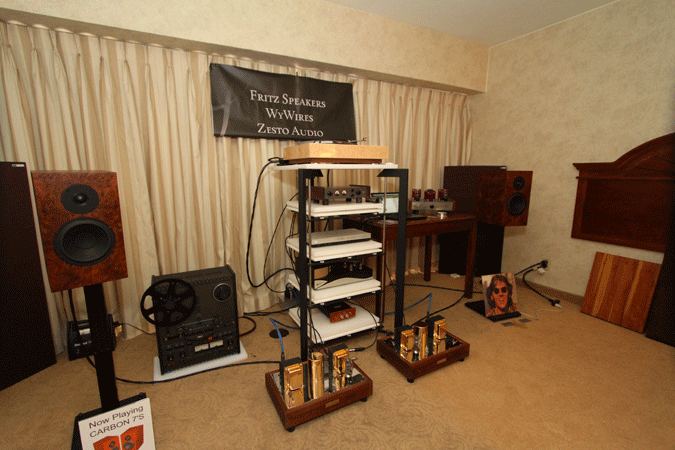
Fritz Speakers paired their Carbon 7’s ($1795/pair) with the Zesto Audio Andros PS1 ($3900) vacuum tube phono preamplifier and Resolution Audio Cantata Music Center ($6495) for sources. Amplification was from Electra-Fidelity and cables were the WyWires Blue Series. I would have preferred a little more bass output but everything else was right on. I have no tolerance for muddy sound and the Carbon 7’s did not disappoint. The system was clean and fast with good imaging.
Rogue Audio (Venetian Suite 29-225)
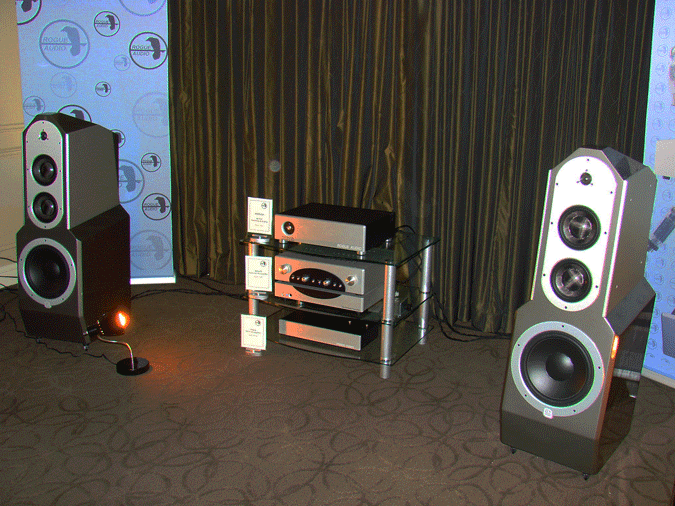
Rogue Audio introduced two new Tube/Class D Hybrid amplifiers at CES. The new designs feature a triode tube front end combined with a Class-D Mosfet output section. The Medusa ($3995) is rated at 200Wpc (8 ohms) in Rogue’s printed literature and 250Wpc on their website. Take your pick. The Hydra ($2995) is 100Wpc. The Medusa was paired with the Rogue Hera II preamplifier ($7995), and the new Rogue Ares phono preamplifier ($1995). The digital source was a MacBook Pro with an Ayre QB-9 DAC. Cabling was from TEL Wire.
The Medusa had no problem powering the 88 dB efficient EgglestonWorks Andra III. I did not care for the sound in the room. To my ears the isobaric-mounted 12-inch woofers (-3dB at 18Hz) in the Andra III overpowered the middle frequencies resulting in a somewhat muddy presentation so I did not get a good feel for the Medusa. Still, I applaud the Rogue design concept. I am a fan of Class D amplification with a tube preamplifier so why not put tubes in the input section of a Class-D amplifier? Some things just go together like peanut butter and chocolate or strawberries and cream.
Rega/The Sound Organisation (Venetian Suite 29-124)
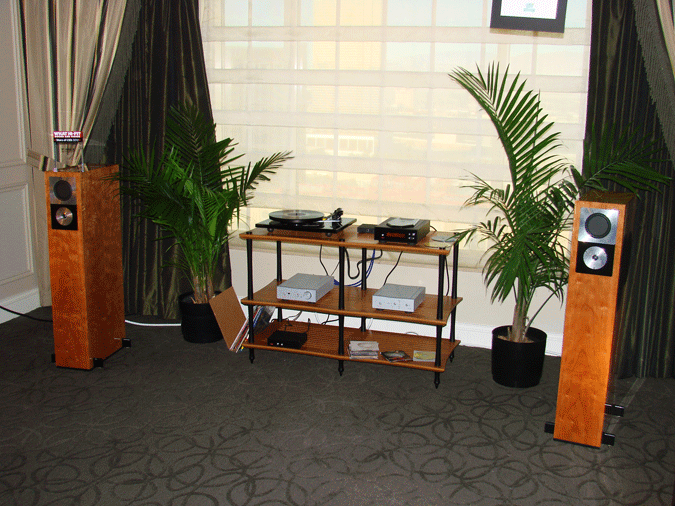
Rega manufacutres a full product lineup. They are represented by The Sound Organisation in the United States. At CES they introduced three new products in Suite 29-124.
The Rega RS10 loudspeakers were so new they did not have a price established at their debut. The RS10s utilize a side-firing woofer along with a Balanced Mode Radiator and traditional soft dome tweeter to handle the middle and upper frequencies.
Sources for the room included a new Rega Apollo-R CD player ($1095) and new Rega RP6 Turntable ($1495 without cartridge and $1990 with an Exact 2 cartridge installed). Completing the system were a Rega DAC ($995), Rega 160Wpc Osiris integrated amplifier ($8995) and Rega Fono Mini A2D phono stage ($175) for moving magnet cartridges. The Mini A2D features analog and USB outputs and is also available in a version for moving coil cartridges.
I was very impressed by the performance and value represented by all the components. Coupled with Rega’s long-standing reputation for quality and service it should be easy to assemble a personal system with guaranteed synergy.
Morel (Venetian Suite 29-309)
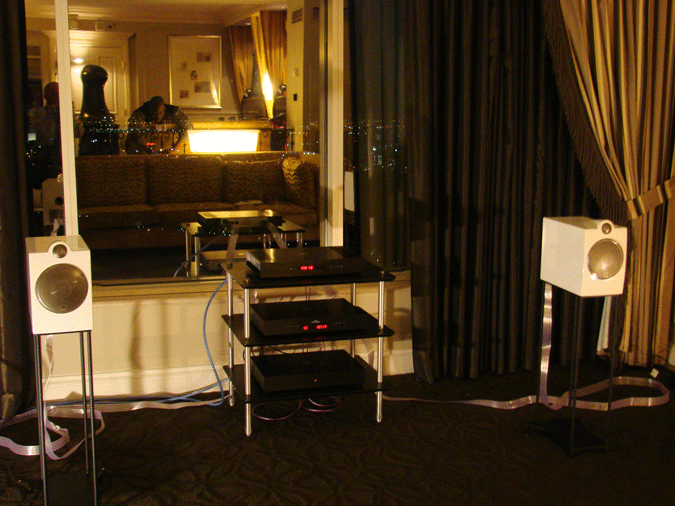
The Morel Octave 6 speakers are offered in a floor-standing version ($6,500/pair) and a bookshelf version ($3,500/pair). I only heard the bookshelf version. It acquitted itself very well on all of my demo tracks. Many bookshelf speakers seem like they are trying too hard to sound larger than they are and end up sounding “listen to what I can do punchy”. That is not the case with the Octave 6 bookshelf speakers. They were much more relaxed and self-confident with a sophisticated and effortless sound.
Equipment in use included a Densen Audio Technologies B-475 CD player, Densen B-175 integrated amplifier (125Wpc into 8 Ohms), and two Densen DNRG external power supplies.
Morel (Venetian Suite 30-308)
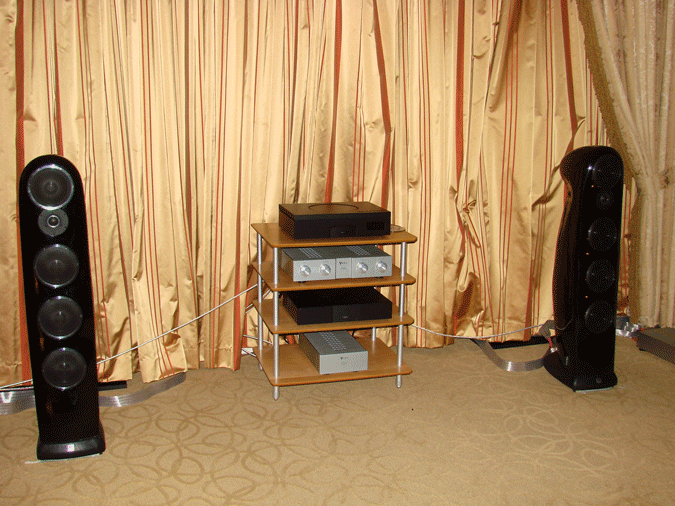
The Sopran ($12,000/pair) incorporates many of the features of Morel’s famous Fat Lady loudspeaker in a smaller and significantly less expensive package. The Sopran speakers also incorporate some new features such as titanium voice coils and in-line reflex ports. Although not quite as cohesive as I would have liked, I thought the Soprans were a well-done package at an attractive price. Equipment in service included a Naim CD-555, Viola Cadenza preamplifier, Viola Forte monoblock amplifiers and Nordost Valhalla cables.
Clarity Cable/Legacy Audio/Avatar Acoustics (T.H.E. Show Suite 4009)
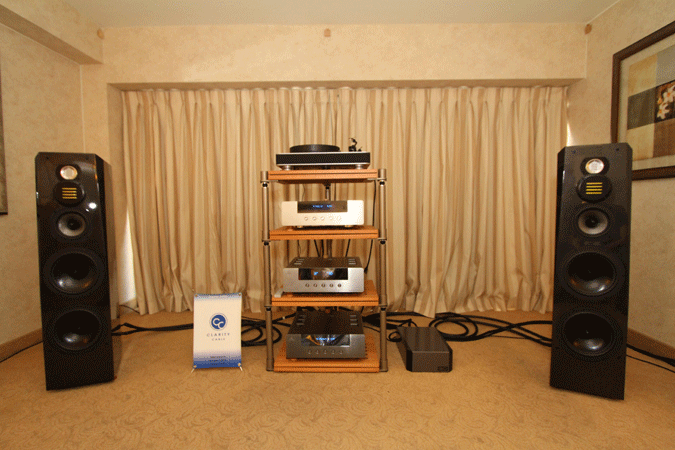
Clarity Cable focuses on providing the most realistic music at an affordable price. This year their room featured the 92dB efficient Legacy Audio Signature SE speakers ($6,950 as pictured in black pearl—other finishes $5995). Sources included a Dr. Feickert Analogue Blackbird turntable ($7,995) with a DFA 12.0 tonearm ($1,495 when purchased with the turntable) and an Abbingdon Music Research (AMR) CD-77.1 CD player ($10,995). Amplification was provided by an AMR PH-77 phono preamplifier ($11,995) and an AMR AM-77.1 integrated amplifier ($9,995). The room was tuned with Acoustic System International Resonators. Clarity Cable wiring included their Vortex power cords ($750), Organic interconnects ($1,400) and Organic speaker cables ($3,500).
Aaudio Imports (Venetian Suite 30-121)
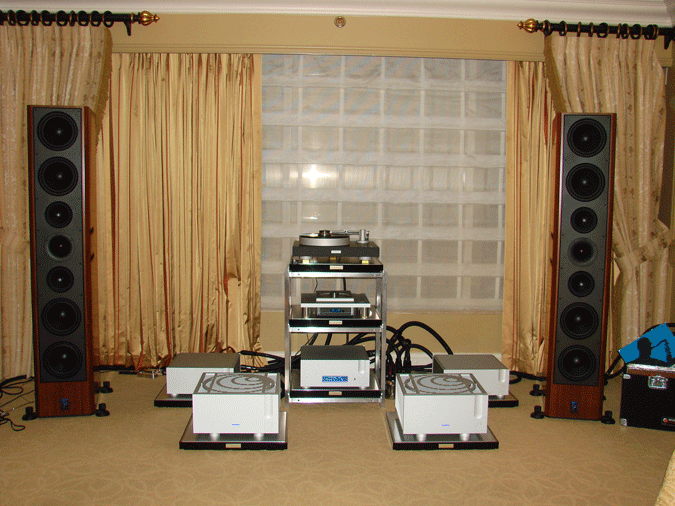
Aaudio Imports always brings their best game to the show. This year was no different. The price of admission is steep but the results cannot be denied. This room definitely did not sound like all of the other rooms. The new Lansche No.7.0 loudspeaker ($100,000) with the Corona plasma tweeter has one of the smoothest and most extended top ends I have heard. But that would not have meant much if the total speaker package had not been so seamlessly integrated. The loudspeaker is a vented-box design complemented by four 8.7” bass drivers and two 4” midrange drivers.
Other new products in the room included the Bergmann Magne Airbearing turntable and arm ($12,000) and Ypsilon Aelius push-pull monoblock amplifiers ($36,000). The CD player and DAC were also from Ypsilon. Stage III Concepts provided all the cabling.
Scaena (Venetian Suite 29-231)
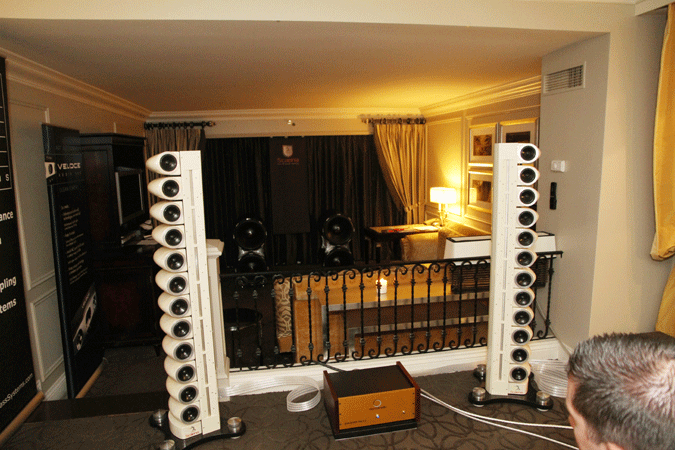
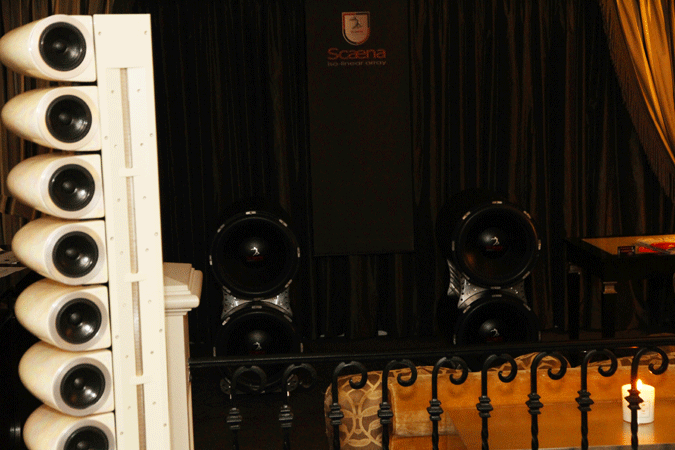
I have been an admirer of the Scaena speakers since I heard the first model at T.H.E. Show in 2007. Over the years changes and improvements have been made. This year at CES Scaena raised the bar considerably with the addition of a new model in their lineup. The Spiritus (Price TBD) utilizes Raven Alize true ribbon tweeters aligned to create a continuous 5-foot line in each tower. The Raven Alize ribbons are custom made for Scaena and differentiate the Spiritus from the other models in the Scaena product line, which use planar ribbons. Unique among speakers, micro-thin placement of the ribbon drivers in the Spiritus allows them to be operated as one continuous driver using a single transformer.
Scaena claims the Raven Alize tweeters measure flat out to 40kHz with almost unmeasurable distortion. I was able to listen to a number of my demo tracks on both visits to the room and think they rival the performance of plasma tweeters I have heard with respect to extension without harshness or aggressiveness. While I cannot fault either tweeter design, I think the iso-linear array of the Spiritus is a definite advantage over a single tweeter design.
The Spiritus loudspeakers use twelve midrange drivers to complete each iso-linear array. Four 18” Scaena subwoofers featuring new drivers and the new sealed design provided well-integrated and tight bass.
Ancillary equipment included a dCS Scarlatti digital source, conrad-johnson ART amplifier, Veloce audio line stage, Nordost Odin cabling, Silver Circle Audio power conditioner, and Critical Mass racks and stands.
Until next year…

![]()
Stereo Times Masthead
Publisher/Founder
Clement Perry
Editor
Dave Thomas
Senior Editors
Frank Alles, Mike Girardi, Key Kim, Russell Lichter, Terry London, Moreno Mitchell, Paul Szabady, Bill Wells, Mike Wright, Stephen Yan, and Rob Dockery
Current Contributors
David Abramson, Tim Barrall, Dave Allison, Ron Cook, Lewis Dardick, Dan Secula, Don Shaulis, Greg Simmons, Eric Teh, Greg Voth, Richard Willie, Ed Van Winkle, and Rob Dockery
Music Reviewers:
Carlos Sanchez, John Jonczyk, John Sprung and Russell Lichter
Site Management Clement Perry
Ad Designer: Martin Perry



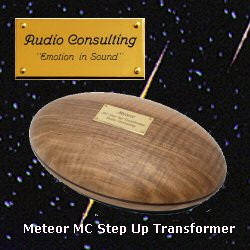



Be the first to comment on: CES Sponsor